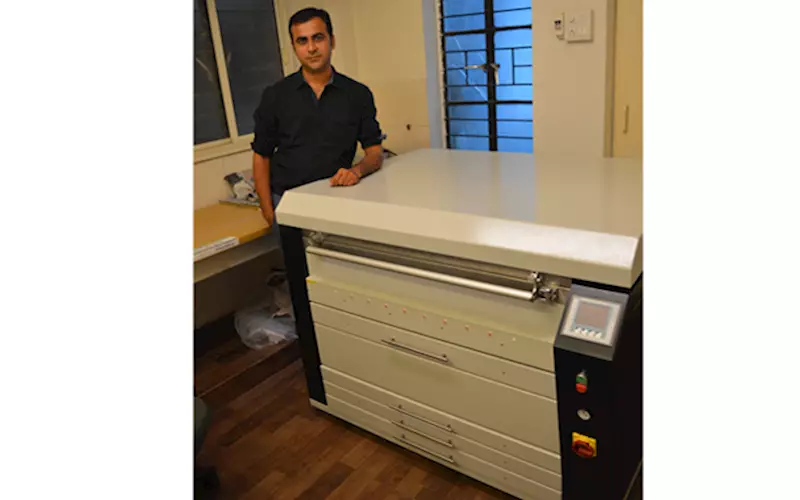Ankit Graphics tackles Gujarat’s letterpress plates requirement with new investment
Ankit Darji, the director at Ankit Graphics added digital letterpress platemaking capabilities to its flexo business, expanding its portfolio as well as bringing this service within the region.
05 Jun 2017 | By Noel D'Cunha
PrintWeek India (PWI): You’ve got a new processor in your armory, this is in addition to the existing flexo plate processor?
Ankit Darji (AD): Yes, we have installed a combi compact A2 letterpress platemaking machine – CT A2 LP manufactured by Global Graphics solutions, Germany.
PWI: What is the difference between the two processors?
AD: One processes flexo plates, the other letterpress plates.
PWI: How did you manage to produce letterpress plates before this investment?
AD: Our old processor was an indigenous kit and was almost 18 years old. We got rid of it three years ago due to space shortage.
Since we did not have any processor till today, we were not been able to invite jobs for such applications. Also, in old machine required a lot of human involvement. This new machine comes loaded with all necessary features that are required today.
PWI: What’s unique about the machine?
AD: With the A2 platemaking machine, we are able to produce good letterpress plates. The unique feature is that it will produce plates with which we will be able to cater to the aerosol can as well as lamitubes printing markets, which we were unable to until now. We can also cater to embossing job requirements.
PWI: Is it a solvent or water wash kit?
AD: This machine is specifically designed for producing water wash plates only. No solvent based plates can be processed in this machine.
PWI: Only water wash plates can be processed, then why is it called a combi unit?
AD: The reason why it’s called a combi unit is that it can do all operations like exposing, washing, drying and post exposing, all in one unit. It can wash both polyester-back and metal-back plates.
PWI: How big is the market for metal printing in terms of the number of players (metal printers/can makers) and plate requirement in sq/m?
AD: There are almost 10 to 13 printers here in Gujarat region. It combines printers printing lamitubes and cans. Also embossing jobs can also be taken care of.
The present plate requirement would be in the region of 2,000 sq/m per month.
PWI: If not for your new machine, how do these metal printers procure plates for dry offset printing?
AD: Presently they are being sourced from other regions. Now with us in action, the players in Gujarat have a local option to meet their requirements, and rather quickly.
PWI: What is the specific requirement in pre-press for making plates for letterpress?
AD: Basic fundamentals remain constant for pre-press. Only a few technical points get added, like sensing marks of a particular type, as also with few layout specs.
PWI: What does your new processor have in terms of technology that will enable you to satisfy this specific requirement?
AD: This new processor will help us produce good quality plates with higher accuracy. Since all parameters are PLC controlled, less human interference is required resulting in better accuracy despite a high number of jobs.
PWI: At what speed does the machine produce plates?
AD: About 2.5sq/m plates up to 175lpi can be produced in a span of one hour.
PWI: Water wash plates would have the limitation of runs, compared to solvent?
AD: Talking about the life of plates compared to solvent and water wash, I do not have sufficient data on that. All I can assert is that these plates run long and reasons for repeat orders for the same job are either because customer wants to double up production or plate has got accidentally damaged.
PWI: How much of the dry offset market do you expect to capture in the next six months?
AD: We expect this machine to run for at least two to four hours a day for first six months. With this run, we will be able to produce 10 sq/m of letterpress plates per day. Talking in terms of clients, I plan to focus on three to five clients, which will suffice our requirements.
PWI: Which companies are going to be your target clients?
AD: Companies printing lamitubes and aerosol cans will be my target clients who do not have an in-house plate making facility.














 See All
See All